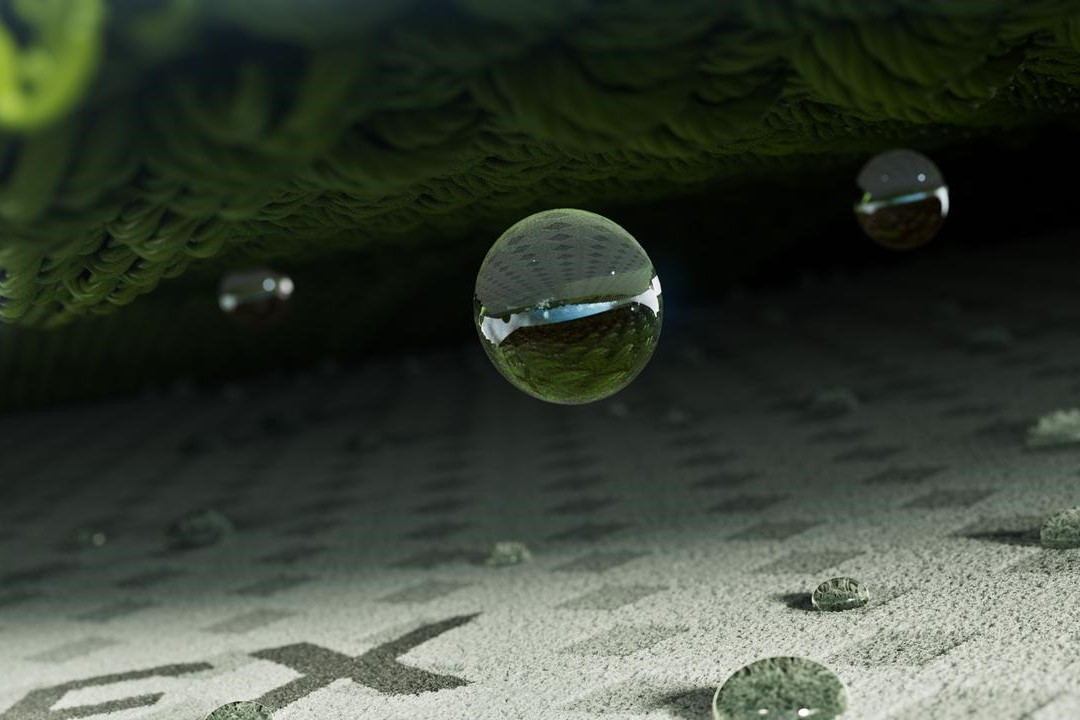In a big step toward GORE-TEX’s ongoing mission to reduce its carbon footprint, the brand announced today that it will use expanded polyethylene (ePE) as complementary material. The move advances the company’s sustainability goals by helping to eliminate PFCs.
In the outdoor world, there’s GORE-TEX in everything. Unfortunately, it’s also increasingly found in nature itself — the high-performance textiles have categorically resisted biodegradability. Meanwhile, the company’s carbon footprint has become an increasing concern.
Today, GORE-TEX announced it will broadly implement a new material, 12 years in the making, that will counteract those effects. Expanded polyethylene, or ePE, is the latest result of the company’s 40-year history of textile development.
The material will play a role in its ongoing mission to reduce its reliance on what it calls PFCs of Environmental Concern (PFCECs). The new ePE replaces PFCECs in some of GORE-TEX’s range without sacrificing performance, according to the brand.
The change will reach as deeply into the industry as GORE-TEX does; the list of brands the company supplies is massive. To start, ePE will appear in adidas, Arc’teryx, Dakine, Patagonia, Reusch, Salomon, and Ziener products.
“As a materials science company, much of the knowledge that we’ve developed over the last 40 years isn’t specific to a singular material,” said Matt Decker, Global Technical and Innovation Leader for consumer fabrics, W.L. Gore & Associates.
“This expertise and deep understanding of our applications is what enables us to create complementary, durable ePE products for use in GORE-TEX brand consumer products.”
GORE-TEX’s Sustainability Goals
According to GORE-TEX, implementing ePE is a big step in its sustainability mission. Broadly, ePE will affect its goal to reduce its product-related carbon emissions by 35% by 2030.
Reduction is a helpful way to think about it: GORE-TEX states it wants to use less material overall, reduce the carbon footprint of those materials, and decrease the chance they get thrown away by improving durability. According to Gore, the lifespan of a garment is the largest factor in its total carbon footprint. The company’s ultimate goal is carbon neutrality by 2050.
GORE-TEX ePE production is also a non-fluorinated process, drastically reducing the chemical impacts compared to the brand’s current expanded polytetrafluoroethylene (ePTFE).
Gore has participated in environmental Bluesign and OEKO-TEX’s environmental certification programs for over a decade to force accountability. And ePE has already achieved OEKO-TEX’s STANDARD 100 certification. GORE-TEX says it’s in the finalization stages with Bluesign.
But maybe most pointedly, the new material advances Gore Fabrics Division’s goal of eliminating PFCs of Environmental Concern (PFCEC) over the lifecycle of its consumer products.
How Does ePE Fit In?
What are PFCECs? Gore Fabrics coined the category and defines the substances as “highly fluorinated, small enough to be bioavailable, and persistent. Although not all PFCs of Environmental Concern are hazardous, they do have the potential to become widely dispersed in water, where they will remain for multiple generations.”
Notably, the company does not identify its ubiquitous ePTFE as a PFCEC because it is insoluble in water and nonbiodegradable.
It’s important to note that ePE won’t entirely replace PFCECs in GORE-TEX materials — at least, not initially. The company planned to reduce PFCECs in its products by 85% in 2020 and completely phase them out by 2023. As of this writing, the status of that initiative was unclear.
However, ePE is a start. According to Higg Materials Sustainability Index tests, ePE beats the polymers it replaces in terms of its carbon footprint. The brand says its durability leads to long product lifecycles, and its high strength-to-weight ratio reduces material usage.
How Does GORE-TEX ePE Work?
GORE-TEX notes that materials similar to ePE have long been available. Microporous polyethylene (PE) has existed for years in markets the textile brand has avoided. PE-based membranes that could work in other applications lacked the durability for waterproof, windproof, and breathable apparel.
GORE-TEX developed PE by using specific expansion techniques and combining it with polyurethane (PU). According to the brand, the construction method “exploits its light, thin yet strong characteristics” and creates the desired performance with a decreased environmental footprint.
Implementing ePE in finished products is a process. First, GORE-TEX starts by expanding the material to create billions of tiny holes in it. The holes allow vapor to pass through but don’t compromise its high strength-to-weight ratio.
Next, the manufacturer adds polyurethane to create a breathable but waterproof membrane.
“The membrane material is the functional foundation of a broader system,” Decker explained. “It is a microporous material that is a wonderful scaffold as a base material for creating waterproof and breathable fabrics.”
Including PU is the critical step — it makes the resulting material waterproof, at only half the thickness compared to the company’s current alternatives.
Finally, it introduces the material into products as a laminate. Bonding it to backer or face textiles, GORE-TEX delivers its characteristic waterproof qualities with less carbon consumption, weight, and thickness.
Testing and Veracity: GORE-TEX ePE
Internal testing by the brand verified ePE’s performance and durability across garments (shirts and jackets), footwear, and gloves. Overall, it found the material performs similarly to those its existing membranes use.
For garments, it lists the following stats:
- Waterproof Entry Pressure test ISO 811: >28m
- Breathability Test ISO 11092: RET <13 (very breathable based on Hohenstein Comfort Rating System)
- Windproof Test ISO 9237: <5l/m2/sec
The company didn’t disclose specific data for footwear and gloves.
Conclusion and Availability
Decker voiced GORE-TEX’s big aspirations for its new ePE membrane material. While it has yet to hit the market, expectations are high.
“ePE is a natural extension of our history and tied to our heritage,” Decker said. “But at the same time, it is helping to boldly move towards the future of the GORE-TEX brand as we continue our journey to unlock new levels of both performance and sustainability.”
Look for ePE in GORE-TEX end-user products starting in fall 2022, in select brands.









